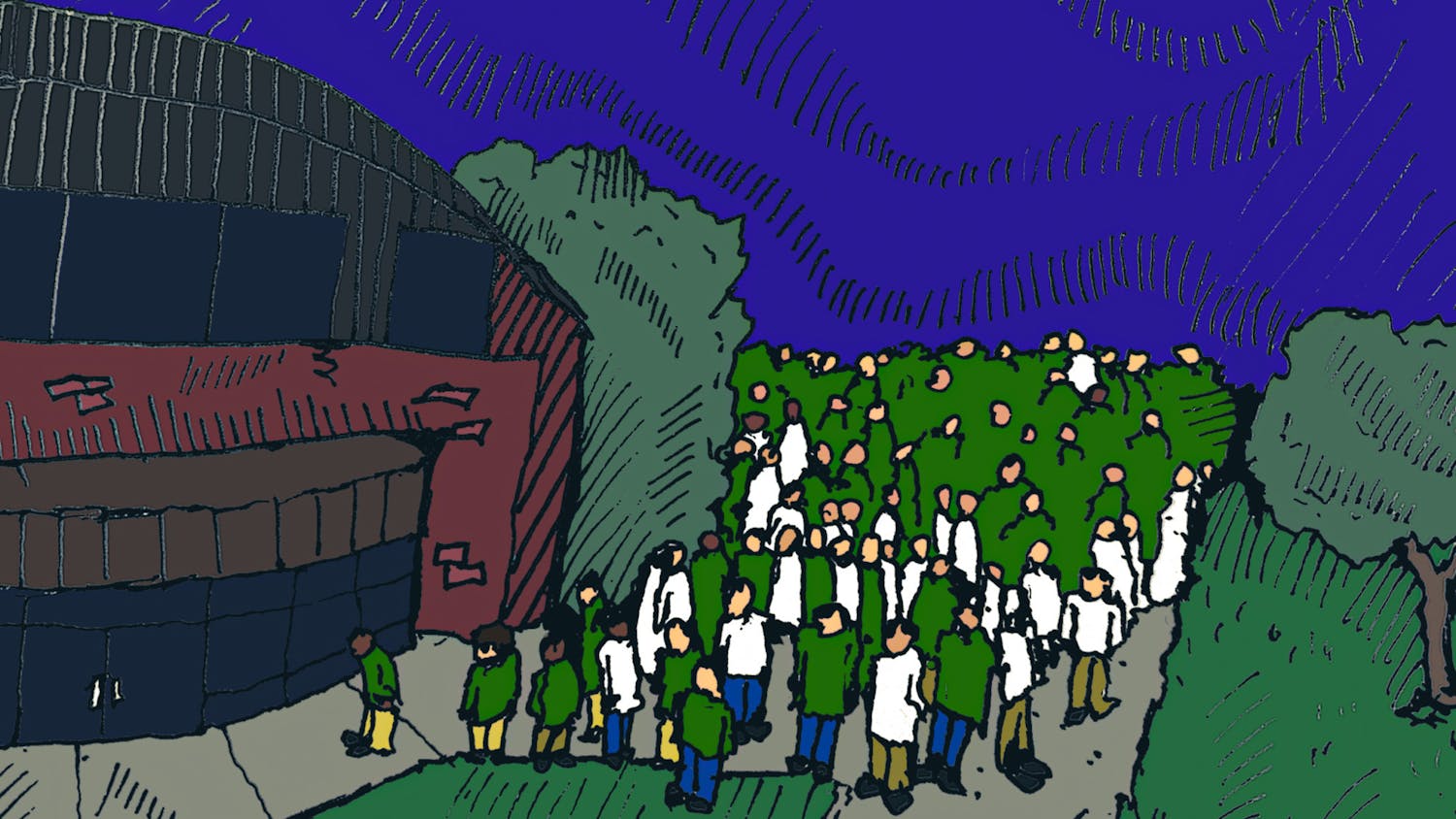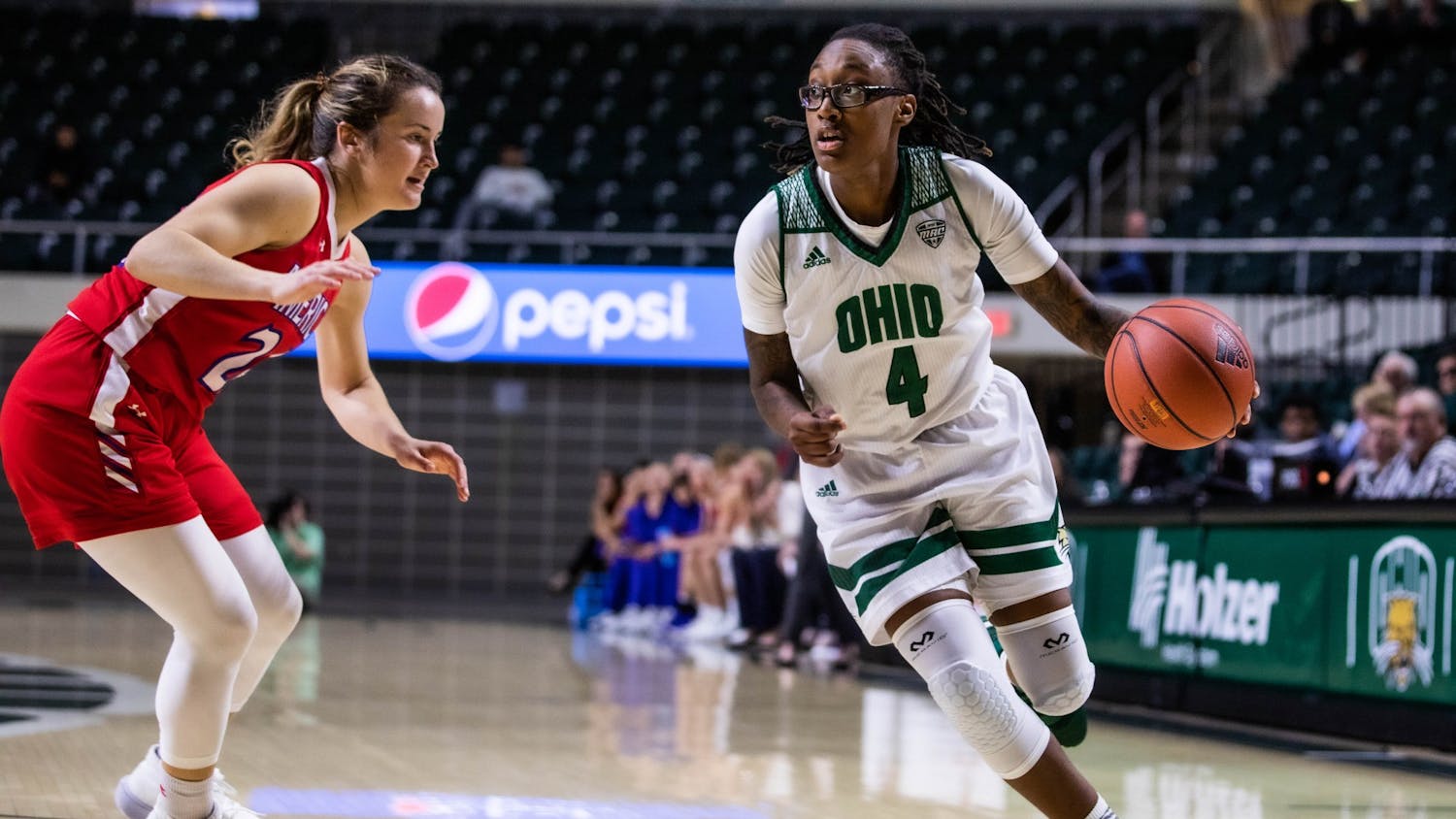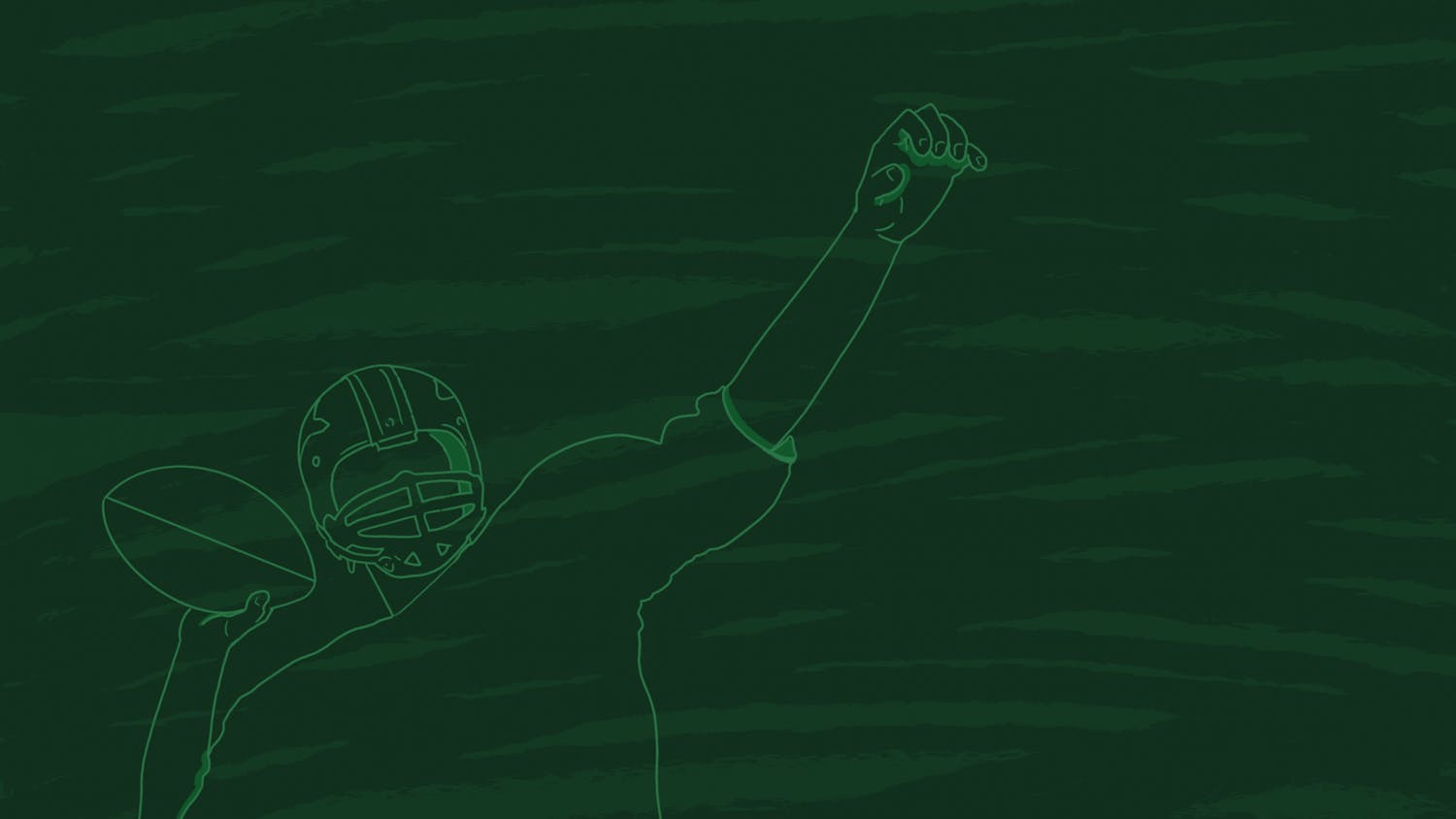Phillip Oberlin started Ohio's Division II hockey program in 2010, and, since then, the program has taken the ACHA by storm. The academically-driven group has racked up one regular season title, one playoff title as well as a trio of seasons where Ohio was the runner-up. In addition, the Division II team has four appearances in Regionals as well as one appearance in Nationals since its inception. Ohio University has always had top-tier hockey that was played by athletes attempting to bring back trophies and allure to Athens. However, Oberlin left the Division II program in 2018 to pursue other ventures. That meant that the team was placed in the hands of the students to not only run it, but keep it alive.
The Division II program hangs by a thread each season compared to its Division I counterpart. The program isn't always sure if it will have the players or resources for a complete season. The players keep the team afloat; however, that makes the lives of the players far from easy. Club President Brendan Cullura organizes almost every logistic. From booking hotel rooms and buses to simple things like ice time for practice, Cullura juggles a lot for the program.
Cullura never imagined being in this situation, but he's glad to be in it. In prep school in Maine, Cullura soon realized that he would fall short of his goal of playing Big Ten hockey. Instead, he turned his attention to the ACHA. He found his home with the Division II team after he failed to make the Division I team.
Cullura is far from alone. In that sentiment, Vice President Hayden Ripley also takes on a variety of responsibilities. Ripley's focus is on the team itself. He keeps the players in order and makes sure everything is smooth when it comes to personnel. Like Cullura, Ripley came to Ohio from Scottsdale, Arizona, for the Division I program, but he found himself a home on the Division II team. Like many others before, he knew little about the team other than they were simply not the Division I team.
The Division II is student run beyond hockey-related logistics, too.
"We have a media team that has really been putting in work to get our social media up there," Cullura said. "You can win as much as you want, you can go 25-0 on the season, but I don't really think people would notice if you didn't have a good social media presence and they do a great job at getting our names out there … especially on a team where you are paying your own fees, you're coming in and doing this on your own time during school, during hours where you should be studying and people bought in and they believe in each other and the team."
The fact that there are two teams on campus is enough to confuse many fans into how the two teams function and are organized. However, the fact that one of the teams is classified in a higher division gives the impression that the lower-ranked team is a "little brother" or just a minor league team. That is far from the case as the Division II team has lifted numerous trophies in its own right.
One thing that both Cullura and Ripley admit is the stigma that has surrounded their team. The idea that the Division II team is not competitive is something that draws the ire of the leaders of the program.
With two teams playing the same sport for the same school, the notion that they are competing with one another is natural. However, they both have talent.
In terms of the opponents and scheduling, the distinction is similar to that in baseball, where schools can have as many teams as long as only one is in each division (either I, II or III). The ACHA is the greater umbrella that both teams play under, but the Division I team is in the Central States Collegiate Hockey League while the Division II team is in the Tri-State Collegiate Hockey League. The season for the Division II team runs from when the leaves are changing in September all the way to when there are no leaves and the new ones are getting ready to sprout for a new season in March.
The Division II team is playing in the TSCHL Southeast Division, where their opponents include teams among the likes of Louisville, Kentucky, Miami, Ohio State, to name a few. When it comes to those teams, they are structured more like the Division I team or even an NCAA team. Having the ability to play around Athens is a massive plus, but Ohio does travel to places like Ann Arbor, Michigan, and even Wilmington, Delaware. The respective programs are all well-oiled machines that have the sole focus on winning at all costs. The Division II team has success as a focus, but there is also an emphasis on academic excellence.
"It's no different than any team I've ever played on," Cullura said. "We take it seriously when it comes to game time. And, you know, we don't want you to miss practice, but it's a very organized team. And obviously, like I said, school comes first, but I would never give this up for a second just because of the atmosphere of being on a team."
The functionalities of the two organizations differ almost entirely, including funding. The players on the Division I team get the opportunity to play for free; however, the Division II team does not receive such amenities. The players are paying out-of-pocket costs to supply jerseys, hotels and equipment, which alone can cost up to $6,000 a person.
"Both teams are doing it for the love of the game because you don't get scholarship money or anything," Cullura said. "There is just a lot more student-run stuff on our team compared to (the Division I team). There is a lot of stuff (Hayden and I) have to do behind the scenes. We have grown up with adults getting everything set up for us … we kind of get thrown into it because it is all on the students."
The way the program functions can be viewed through a pair of lenses. The first would be that the students gain incredible experience in real time. The other one is that players like Cullura, Ripley and treasurer Patrick Roach are overworked and cannot do everything by themselves. Even the team's coach is a student. The man behind the bench is Ryan Dunning, a student volunteer who is a former player.
"I think we are trending upward as a program," Cullura said. "We have a good group of underclassmen that are willing to take over (for the upperclassmen) ... There is always the thought of ‘Will we have a team this year?'"
Academics is where the real distinction lies between the programs. Division II places the academic success of its players before any sort of on-ice performance is considered. That is not to say that the Division I team does not, but the main focus for Division II is to maintain a high academic standing while also playing hockey, not the other way around.
This season, though, everything has come together for the Division II team. The Bobcats are towards the top of the conference and possess a real chance to make a deep push in the postseason. With a few games remaining, their record of 18-6 overall and 10-6 in TSCHL play. The reason for this change in culture and success can be attributed to a multitude of factors.
The first factor is experience. This past season, the Division II program added a slew of former Division I talents.
The idea of Division I players coming down to play for the Division II team makes it appear as though those players were not good enough. Therefore, they had to play for the "minor league" team, but that is not the case. Cullura and Ripley both attest that almost any player on the Division II roster could play meaningful minutes for the Division I team. Simply, the team's higher focus on academics allowed them to choose a lighter commitment in order to reach those scholarly goals.
The Division II players want to wash away the stigma surrounding their team. They want to bring a trophy back to Bird arena, not just for themselves but for all those who played before them.
"I want to nix the notion that we're the JV team," Cullura said.






